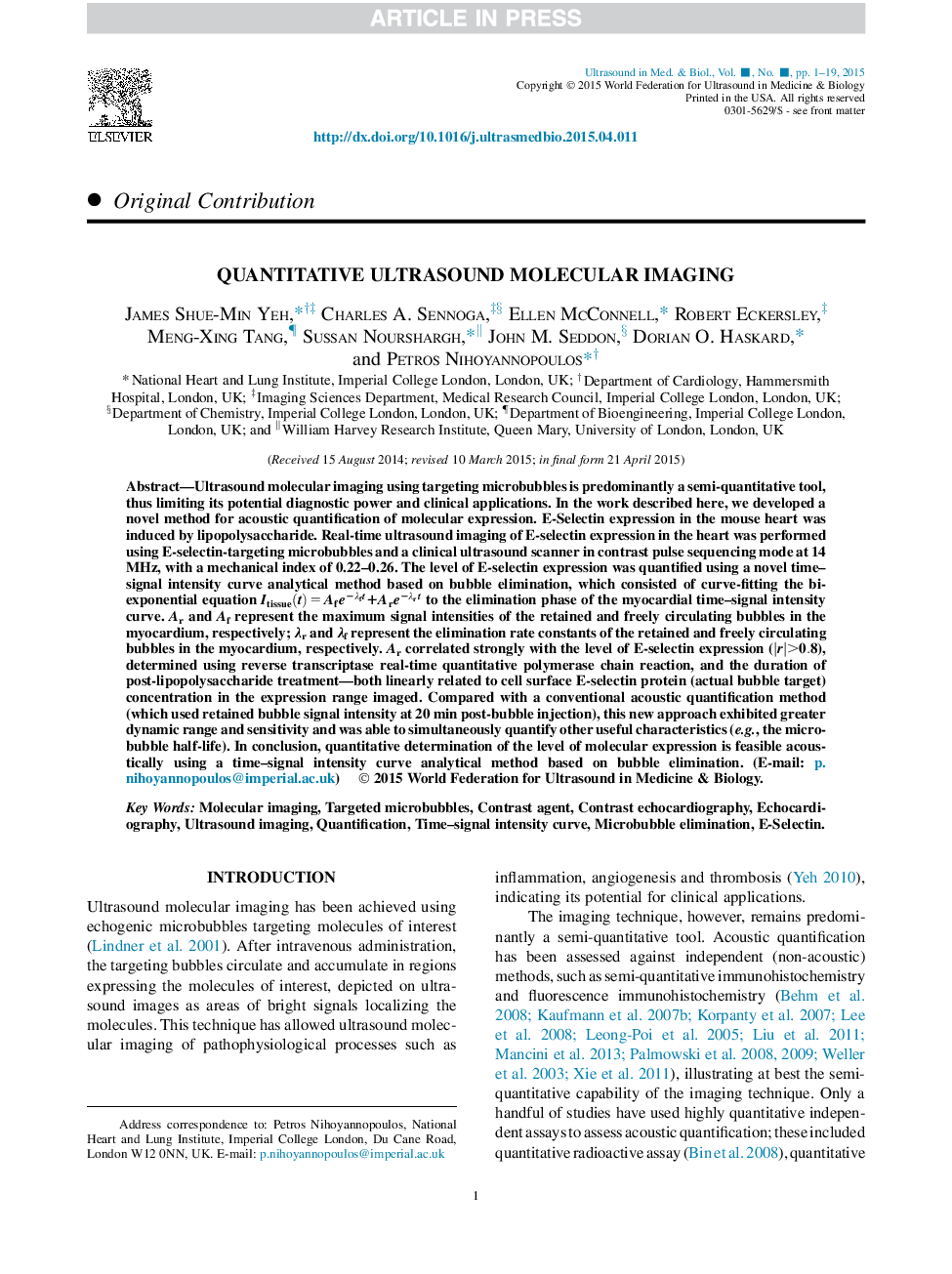| Article ID | Journal | Published Year | Pages | File Type |
|---|---|---|---|---|
| 1760289 | Ultrasound in Medicine & Biology | 2015 | 19 Pages |
Abstract
Ultrasound molecular imaging using targeting microbubbles is predominantly a semi-quantitative tool, thus limiting its potential diagnostic power and clinical applications. In the work described here, we developed a novel method for acoustic quantification of molecular expression. E-Selectin expression in the mouse heart was induced by lipopolysaccharide. Real-time ultrasound imaging of E-selectin expression in the heart was performed using E-selectin-targeting microbubbles and a clinical ultrasound scanner in contrast pulse sequencing mode at 14 MHz, with a mechanical index of 0.22-0.26. The level of E-selectin expression was quantified using a novel time-signal intensity curve analytical method based on bubble elimination, which consisted of curve-fitting the bi-exponential equation Itissue(t)=Afeâλft+Areâλrt to the elimination phase of the myocardial time-signal intensity curve. Ar and Af represent the maximum signal intensities of the retained and freely circulating bubbles in the myocardium, respectively; λr and λf represent the elimination rate constants of the retained and freely circulating bubbles in the myocardium, respectively. Ar correlated strongly with the level of E-selectin expression (|r|>0.8), determined using reverse transcriptase real-time quantitative polymerase chain reaction, and the duration of post-lipopolysaccharide treatment-both linearly related to cell surface E-selectin protein (actual bubble target) concentration in the expression range imaged. Compared with a conventional acoustic quantification method (which used retained bubble signal intensity at 20 min post-bubble injection), this new approach exhibited greater dynamic range and sensitivity and was able to simultaneously quantify other useful characteristics (e.g., the microbubble half-life). In conclusion, quantitative determination of the level of molecular expression is feasible acoustically using a time-signal intensity curve analytical method based on bubble elimination.
Keywords
Related Topics
Physical Sciences and Engineering
Physics and Astronomy
Acoustics and Ultrasonics
Authors
James Shue-Min Yeh, Charles A. Sennoga, Ellen McConnell, Robert Eckersley, Meng-Xing Tang, Sussan Nourshargh, John M. Seddon, Dorian O. Haskard, Petros Nihoyannopoulos,
